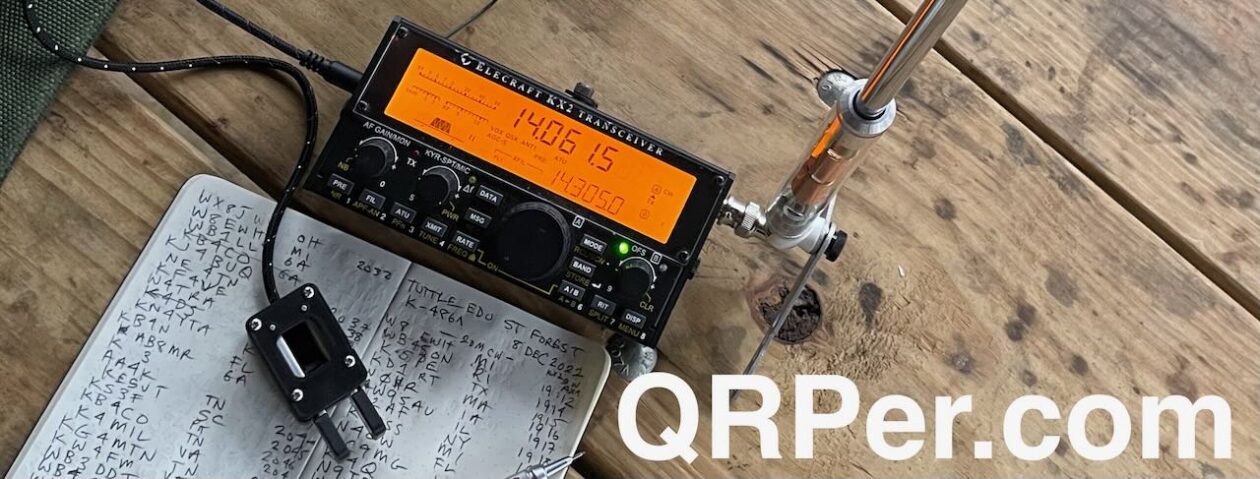Those of you who’ve been following my field reports for a few years might have noticed something different: I haven’t been activating some of my favorite POTA sites as often. Here’s the reason why, and how I’m working to get back on the air at these special locations:
Most notably:
- Lake James SP (US-2739),
- South Mountains SP (US-2753),
- Lake Norman (US-2740),
- Fort Dobbs (US-6839),
- and Tuttle Educational State Forest (US-4861)
These parks are all in or around Hickory, NC, where I used to travel weekly to care for my mom and take her to oncology appointments.
Sadly, she passed away in January. Since my sister has moved in with my dad, my trips to Hickory are now often day trips with the family, squeezed into busy afternoons. Unfortunately, that hasn’t left much time for radio activations.
I’ve been longing to return to these parks! As an activator, you get attached to familiar spots–at least, I do–they become a home-away-from-home. These parks have definitely been calling me.
Two weeks ago, however, I started driving to Hickory again daily. My father was hospitalized, and I needed to be there for him. Thankfully, he’s much more stable now, in physical therapy rehab, and making progress.
These trips back to Hickory have allowed me to fit in some “radio therapy” at my favorite POTA sites.
On Thursday, April 25, 2024, I finally returned to the one I miss most: Tuttle Educational State Forest (US-4861).
Tuttle is an ideal POTA site: plenty of setup spots, a two-mile loop trail, and incredibly supportive staff. They’ve encouraged me to put up any antenna I want, as long as it doesn’t interfere with other visitors. Plus, Tuttle is usually quiet, which I also love.
It was nice to see Tuttle’s entrance sign again!
Once on-site, I picked out a picnic site with shade. It was a sunny spring day and I forgot to bring my wide-brimmed hat (it was in the other car!).
 It wasn’t a problem, though, as most of the picnic area at Tuttle is shaded.
It wasn’t a problem, though, as most of the picnic area at Tuttle is shaded.
That morning, I loaded one of my radio packs with gear and packed my Index Labs QRP Plus.
 I was eager to put my Index Labs QRP Plus back on the air at a park. This radio holds sentimental value, taking me back to visiting my first amateur radio field activity in 1997! I paired it with my MM0OPX End-Fed Half-Wave for multi-band operation (40, 20, 15, and 10 meters).
I was eager to put my Index Labs QRP Plus back on the air at a park. This radio holds sentimental value, taking me back to visiting my first amateur radio field activity in 1997! I paired it with my MM0OPX End-Fed Half-Wave for multi-band operation (40, 20, 15, and 10 meters).

I decided to pair the QRP Plus with an End-Fed Half-Wave which would give me 40, 20, 15, and 10 meters without needing an external ATU (I had packed my Elecraft T1 as well, but I really didn’t need it).
I had a little over an hour to perform this activation, then head back to the QTH to be with my wife and daughters. It was “Star Trek” night, so I couldn’t be late (priorities–!).
Gear
 Note: All Amazon, CW Morse, ABR, Chelegance, eBay, and Radioddity links are affiliate links that support QRPer.com at no cost to you.
Note: All Amazon, CW Morse, ABR, Chelegance, eBay, and Radioddity links are affiliate links that support QRPer.com at no cost to you.
- Index Labs QRP Plus
- High Visibility Jacket ABR240-UF with PL-259s and 5 Ferrites (Use Coupon Code ABR10QRPER for 10% Discount!)
- MM0OPX QRP EFHW (Contact Colin for Availability)
- Bioenno 3 Ah LiFePo Battery (Model BLF-1203AB)
- VK3IL Pressure Paddle V2
- Weaver arborist throw line/weight and storage bag
- Tom Bihn Large Travel Tray
- GraphGear 0.9mm 1000 Automatic Drafting Pencil
- Rite In The Rain Top Spiral Notebook
- Camera: DJI OSMO 4 action camera with Sensyne Phone Tripod
- Leatherman Signal Multitool
On The Air
 Even though propagation has been very unstable lately, I’ve gotten some surprising openings on the higher bands, so I decided to start this activation on 10 meters, then work my way down the band until I hit activity. Continue reading Caregiving and QSOs: Returning to a Favorite POTA Site
Even though propagation has been very unstable lately, I’ve gotten some surprising openings on the higher bands, so I decided to start this activation on 10 meters, then work my way down the band until I hit activity. Continue reading Caregiving and QSOs: Returning to a Favorite POTA Site



























































































































